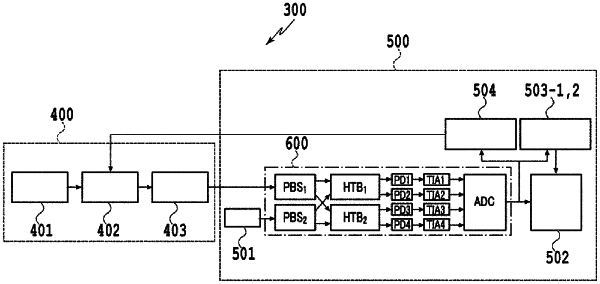| CPC H04B 10/61 (2013.01) [H04B 10/0773 (2013.01); H04B 10/0799 (2013.01)] | 5 Claims |

|
4. An evaluation device that evaluates an optical receiver including optical 90-degree hybrids, the evaluation device comprising:
a processor,
non-transitory computer readable medium having stored thereon executable code that is executable by the processor,
a transmission unit and a reception unit connected via a transmission path,
wherein the transmission unit includes a known signal generator that generates a series of known signals, an optical transmitter, and, when executed by the processor, the executable code causes the processor to function as a transmitter compensation unit that acquires an estimation result of a transfer function of the optical transmitter from a transmitter transfer function estimation unit of the reception unit and compensates for the transfer function of the optical transmitter,
wherein the reception unit includes an optical receiver, and, when executed by the processor, the executable code causes the processor to function as a receiver compensation unit, first receiver transfer function estimation unit, second receiver transfer function estimation unit, and the transmitter transfer function estimation unit,
wherein an estimated transfer function of the optical receiver is decomposed by the evaluation device into terms of a phase error between the 90-degree hybrids, a gain imbalance between channels, and remaining rotation, and
wherein the optical receiver is evaluated.
|